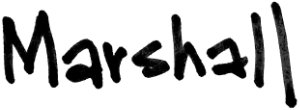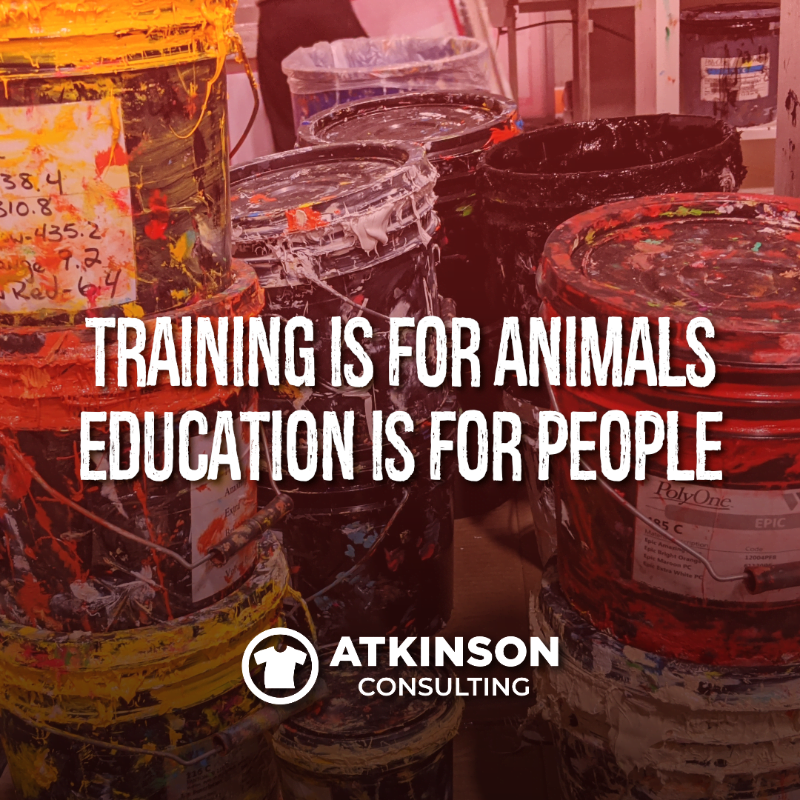I recently read this sentence by Alan Weiss, “Training is for Animals, Education is for People.”
Wow. That hit me like a ton of bricks.
Here’s why. Over the last thirty years or so in this industry, I’ve put together numerous training programs for staff members. Both at companies I’ve worked for and also for clients as well. The optimal goal of that effort has always been to improve people’s performance.
I’ve often viewed it as “training,” but not necessarily as “education,” which is a much better way of looking at it. I love it when something sharpens my focus.
Isn’t the ultimate goal of any sort of company-sponsored “training” to level up the staff somehow? Looking at it from the point of view of enlightening the team by providing a systemic, standardized set of lessons to increase their level of understanding just makes more sense.
Here are some thoughts on building out an educational program for your business.
Standardize The Way You Do Things
If you haven’t already, start inventing the “shop way” of doing anything and everything. From how you answer the phone to how you tape up a box, you need the correct way of doing it.
Chris, Jose, and Maria can not have their own particular ways of performing a task. Simplify things if you can and standardize the action.
- Which way takes the least amount of time?
- How do you inject quality into the process?
- What do you need to do to use the least amount of consumables or materials?
- What are the best practices for this task in the industry? Do some research to make sure you are on track.
When you standardize the process for something, it makes it easier to replicate by anybody. Then, when you educate your staff on the standard, you align with the correct way to handle something.
The trick, of course, is getting everyone to agree on the process or procedure. Run some time studies. Obtain data. The proof will be in the measurements.
Then pick a lane and adopt the best way. This becomes your SOP, which you hold your crew accountable for in the future. Consistently educate on the method.
Education Programs
Next, consider how you are injecting the “shop way” of doing anything into the way current and new employees handle these tasks. This happens with a steady drip of education.
Here are a few methods you might try:
- Reminder posters and signs. Using as few words as possible, remind people about the proper way to do something. Icons work great.
- Color Coding. Use colors to signify different departments, equipment, shifts, or really anything. I’ve been to plenty of shops that print all rush order documents on bright pink paper.
- Videos. Everyone has a movie studio in their pocket, with their cell phone. Why not put that technology to good use? Film the “right” way of doing something and make it a private YouTube video. Link that to a small QR code sticker. Want to know the proper recipe to fill up the dip tank? Scan the video on the side of the dip tank and watch the video!
- Lunch & Learns. Once a month or so, bring in sandwiches or pizza and have a discussion topic. What is EOM? Dye migration? Proper screen tension? How to use a color spectrometer? Don’t assume that your crew knows and understands these things. If they say they do, have them lead the discussion! Then you’ll know for sure.
- Mentoring. Have a team member work with another team member to teach them the “shop way” of doing something. This is 1:1 working at its best. Make sure everyone learns the same way, though. You don’t want the “here’s how I do it” method.
- Actual Classes. This is the hardest one. On purpose, schedule a 30-minute class about something. Bring in a few people and get them engaged. Keep track of who is there. Let your team “drive the car” so to speak, so they can learn how to do things with actual hands-on experience.
The Learning Preference Challenge
When you are working with people, one obstacle that will surely come up is that everyone learns differently. Different speeds. Diverse methods. And with particular levels of willingness.
As everyone learns differently, the best approach is patience. Keep repeating the educational content. Sooner or later, it will stick.
But, to be honest, there are some people that will either refuse to learn or will never grasp the concepts. It is simply out of their ballpark. My one nugget of advice for that is the adage, “You change your people, or you change your people.”
Education Pays
To close, I want to advocate that your company spend more thought, time, and effort on educating your staff. Not training. Educating.
This means that someone not only shows the correct steps to do something but talks about the “Why” that is behind the correct method. The “Why” is what will connect the dots and get your team to link the actions of what they are doing with the people and tasks downstream from them.
A huge chunk of what we do in this industry has a cause and effect on what happens later in the process.
Don’t think so?
The next time you are using your fingernail to pick off the tape remnants from a screen so you can reclaim it, stop. Get the purchasing person who found the “deal” on the tape and ask them to help. Have them stand there for two or three hours, frustrated at how easily the tape rips when you try to remove it.
I guess that bargain tape wasn’t such a deal after all, huh?
That’s an education.
“An investment in knowledge pays the best interest.” – Benjamin Franklin
“Good questions outrank easy answers.” – Paul Samuelson
“Everybody is ignorant, only on different subjects.” – Will Rogers
Help Support This Blog

If you like this blog and would like to support it, you can:
- Buy a book.
- Share this blog on your social media.
- Join Shirt Lab Tribe.
- Subscribe to the Success Stories podcast.
- Watch and like an episode on the Jerzees Adventures in Apparel Decorating YouTube series.
- Get signed up for the new Production Tracker app.
Also, my basic elevator pitch to you is I’m that help with “Clarifying effective change.” If you need help and want to learn more, please schedule a discovery call here.
Thanks!

Marshall Atkinson also shares exclusive blog content at Supacolor.com. Supacolor makes The World’s Best Heat Transfer and provides tips, inspiration, and other resources designed to empower professional garment printers.




